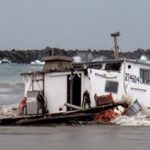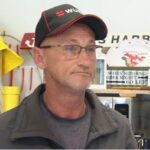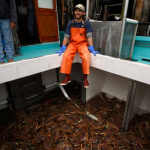Tag Archives: DON CUDDY

DON CUDDY: Whales, fish stocks and new tech: Catching up with NOAA’s Jon Hare
I was pleased to enjoy a wide-ranging chat with Mr. Jon Hare last week. Jon is the Science and Research Director for NOAA’s Northeast Fisheries Science Center in Woods Hole. That’s the division of NOAA that is charged with managing “the living marine resources of the Northeast Continental Shelf Ecosystem from the Gulf of Maine to Cape Hatteras.” So this man has a lot on his plate. When he began working as director in 2017 I interviewed him about the task ahead and did a follow up last year. So in what has now become an annual event we sat down to talk about how things are going at the Science Center and I found the encounter as interesting as ever. >click to read<18:40

DON CUDDY: Local expert diver, Dartmouth’s Steve Cassidy, recalls 1975 Atlantic Sword tragedy
The recent passing of Harriet Didriksen, owner of New Bedford Ship Supply, signifies the loss of yet another link to the city’s long and rich fishing heritage. It was perhaps that sad news which inspired me to seek out another of the old-timers whose lives were spent on the city’s waterfront. South Dartmouth’s Steve Cassidy is a young 91 years of age. He has accumulated, and still retains, an encyclopedic knowledge of the boats, and the men who fished on them, from the SouthCoast area over the last six decades.,,, As I sat in his living room this week he shared some of his memories with me and reflected particularly on a tragedy that is now long-forgotten but one that has never left him. >click to read<19:53

Our surf clam fishery is headed for disaster
When it comes to fishery management controversy never seems to be too far away. Last month you may have read about the dubious nature of a decision by the New England Fishery Management Council to close a large area of Nantucket Shoals to fishermen who harvest surf clams there, ostensibly to protect fish habitat. Questionable actions such as these undermine industry confidence in fishery regulators and serve only to alienate, and embitter, fishermen and the many others on the waterfront whose livelihoods are threatened by such draconian measures. >click to read<20:47
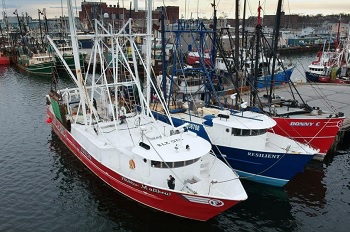
Don Cuddy: Kathy Frey ‘believed she could, so she did’
Most people probably imagine that the waterfront is a man’s world and that is largely true. Yet there are some exceptions, and none perhaps more notable than the case of Kathy Frey. How else to account for this diminutive single mom, retired in 2013 after 30 years as a postal worker, subsequently finding herself on the deck of a tugboat, hooking up a barge loaded with 5,000 tons of sand. For an answer look no further than the stern of the 34-foot powerboat that she calls home. It’s called the Free Spirit. Growing up next to Sassaquin Pond and occasionally piloting a rowboat marked the extent of her connection to the water. After she retired a friend one day suggested she join the Coast guard Auxiliary. She did and “started doing things on boats.” >click to read<09:33
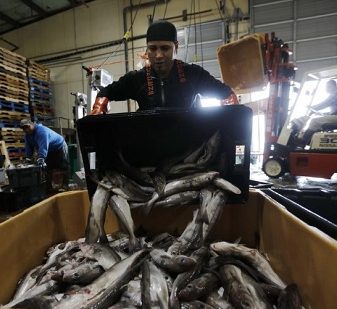
Don Cuddy – Seafood comes in many forms — how fresh is yours?
We live, as we are often reminded, in the top grossing fishing port in the United States and have some of the planet’s most productive fishing grounds right off our shores. So for those among us who enjoy and appreciate the harvest of the sea, and its clean, healthy, wild-caught protein, there is no better place to live than New Bedford. Lately however I have begun to wonder just how many people around the SouthCoast are fish eaters and include our excellent seafood as a regular part of their diet? Apart from perhaps ordering fish and chips or fried scallops in a restaurant on a Friday night that is. That counts certainly but what I have in mind is selecting some seafood at the market and bringing it home. >click to read<12:29

Don Cuddy: Sector reopenings benefit to New Bedford remains to be seen
The news emerged on July 19 that NOAA approved a plan that may now permit some New Bedford fishermen back to work. ,,,So while this decision is a small step forward for the groundfish industry here, it is not yet time to set the church bells ringing since the majority of the inactive quota is owned by inactive fishermen. When the catch share system was introduced in 2010 it gave all permit holders a slice of the pie- the “pie” being a share of the TAC, or total allowable catch, for the annual fishing year, which for groundfish begins on May 1. Individual allocations were based on a permit holder’s catch history over a ten-year period from 1998 to 2008, I believe it was. That effectively means all of the cod, haddock and flounder swimming around on Georges Bank, more than one hundred miles offshore, have someone’s name on their backs, similar to a herd of cattle,,, leased , sold, or traded,,, >click to read<20:53
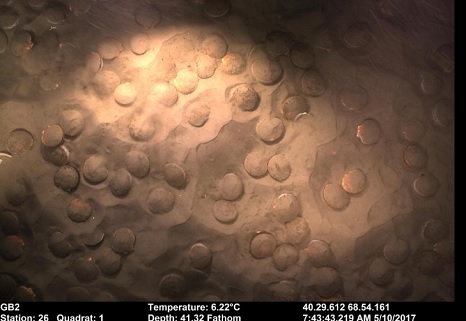
Don Cuddy: Mattapoisett company moving fishing tech forward
Sometimes a chat over a fence is all it takes to set great things in motion. Fairhaven resident Karl Edminster was talking with his neighbor, marine researcher Emily Keiley, when she mentioned that SMAST had an underwater cable that had suffered damage on a fisheries survey cruise. She knew Karl’s job had something to do with electrical work. He said he’d take a look. In fact, Karl is the president of Elecrtromechanica, a high tech design and build engineering outfit based in Mattapoisett. They spliced the cable. “But we told them we do more than fix cables,” >click to read<15:04
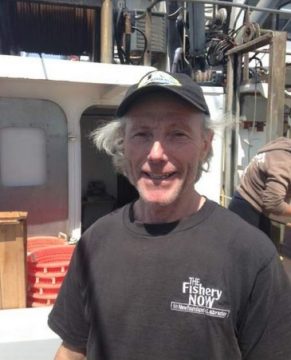
Don Cuddy: Why I’m returning for my ninth Boston Marathon
My first Boston marathon was in 1992. I’d sailed my boat to New England from San Diego, arriving in the fall of 1990 and running Boston ranked very high on the list of things I wished to accomplish. I was 39 and to obtain a number, the BAA required me to run a sub-3:15 qualifier, So 1991 became all about running. I targeted the Marine Corps marathon in D.C. that November for my qualifying race. Alas, my inexperience proved costly. I ran too fast, too early and finished in 3:19. >click to read< God Speed, Lad!
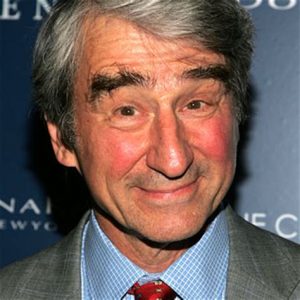
Proposed Magnuson Stevens changes are reasonable – Support HR-200
“Things bad begun make strong themselves by ill” Macbeth,Act III, Scene II I am wondering how much commercial fishermen know about acting? At a guess I’d say probably as much, or as little, as most actors know about commercial fishing, even award winning ones. This thought arose following the recent appearance in these pages of an opinion piece>click to read Rep Keating, defend the Magnuson Act< on fishery management by a member of the acting profession in an attempt to wield political influence. The thespian in question is also an Ocean board member, a well funded environmental group antithetical to America’s oldest industry. By Don Cuddy, >click to read< 19:35
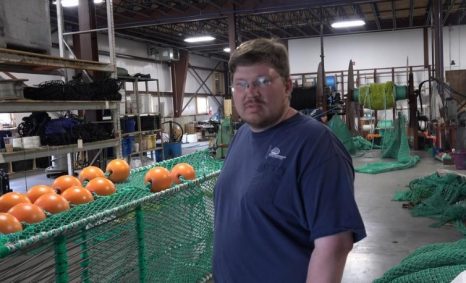
Reidar’s, like others, part of Sector IX collateral damage
It was just before thanksgiving that NOAA shut down Sector IX after Carlos Rafael had been found guilty and sent to jail and, three months later, none of the boats or crews from the sector are any closer to going back to work. “There has been a lot of talking, but, not much action,” Tor Bendiksen told me. A number of suggestions have been out forward about how to resolve the issue, but there is a notable absence of leadership, throwing local business owners under the bus because one of their customers gamed the system is rough justice, to say the least. >click to read<09:12
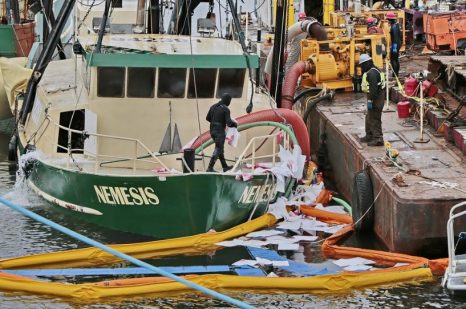
Don Cuddy – Local Salvage Company has Unique Edge on Marine Work
Two fishing boats going down at Homer’s Wharf in New Bedford harbor in the wee hours of February 5 made headline news, particularly since both were owned by Carols Rafael Once the media focus turned to the next breaking story the incident was largely forgotten But the wrecks remained. Fortunately expert help was no further away than Fish Island, home to the Tucker-Roy Marine Towing & Salvage Inc. This family owned and operated outfit has acquired considerable expertise from it decades dealing with maritime casualties. >click to read< 19:58
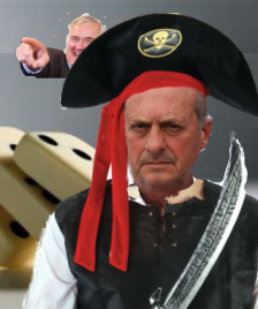
The Shutdown
The National Marine Fisheries Service shut down Sector IX because the majority of its boats and quota belong to Carlos Rafael. This came without warning last November 22 and the order also waived the customary 30-day delay in effectiveness. Far from resolving anything this has exacerbated a bad situation by throwing a widening circle of business owners under the bus as the weeks drag by. >click to read< 15:38
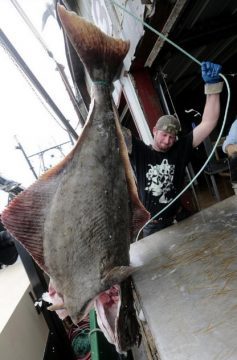
Don Cuddy: Sector closure angers and worries groundfish industry
It was on Monday, November 20, two days before his retirement party as NOAA regional administrator, that John Bullard abruptly ordered the shutdown of Sector IX’s groundfish operations. The boats out fishing had to return to port forthwith.,,, Bullard’s move was praised by some but it engendered some harsh criticism in the city. Click here to read the story. 23:11
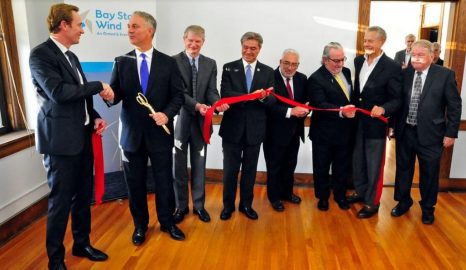
Don Cuddy: Offshore wind is coming, whether it’s cheap or not
As the North American manager of Bay State Wind, one of three developers bidding to install wind turbines in federal waters south of Martha’s Vineyard, Denmark’s Thomas Brostrom is the man to tell us how he sees it as the Dec. 20 deadline for submission approaches. “Its different here than in Europe,” he told me. “,,, With economy of scale, bigger is better, Brostron said. “That means a lower price. And more volume means its easier to attract the supply chain here and companies looking to set up shop. click here to read the story 09:13
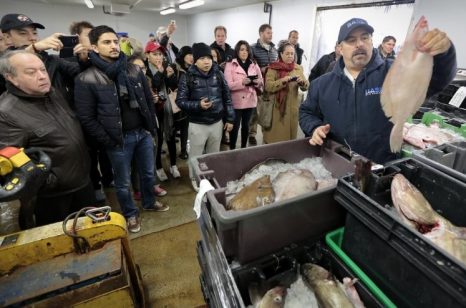
Don Cuddy: At the fish auction, you need a translator
A sow jig hake, a lemon sole Georges or a pee wee channel anyone? Now that is some real New Bedford fish auction talk. Allow me to translate. A hake is one of our underutilized but tasty New England fish species. A sow hake is a fish that weighs in at ten pounds or more while a ‘jig’ is a variety of bottom fishing employing a lead weight with a hook attached that is jerked up and down, by hand or mechanically, to attract and snag bottom dwelling fish. And a 12-inch flounder caught in the Great South Channel is known in the trade as a pee wee channel. Sow jig hake recently fetched $3.15 per pound at the display auction in New Bedford,, click here to read the story 16:27
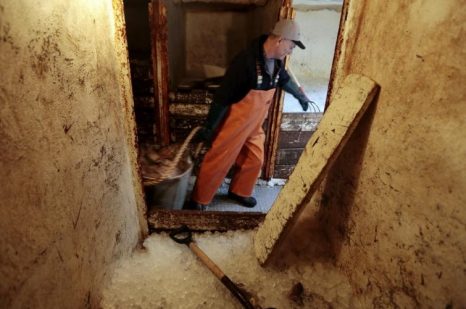
Don Cuddy: There’s profit for New Bedford in processing all of the fish
On September 21, New Bedford officially joined the Icelandic Ocean Cluster, a business incubator in Reykjavik, focused on fostering innovation in ocean-related industries. The cluster, which focuses on marine biotechnology, aims to demonstrate that the seafood industry can extract more value from its fisheries as part of this network. The bottom line is getting people to look at organic waste as a product that has value and not simply as waste. Mayor Jon Mitchell signed the agreement with Thor Sigfusson, the main man from Iceland, at a ceremony held at the Whaling Museum. click here to read the story 08:27
Don Cuddy: NOAA scientist says manage fishery as a whole, not by individual stocks
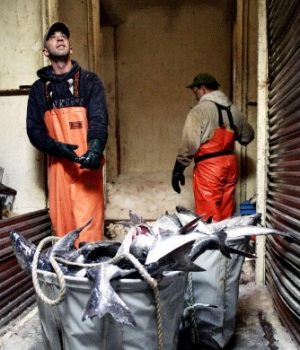 It was interesting therefore to hear a presentation in Plymouth last Thursday by Dr. Russell Brown, a career NOAA Fisheries scientist with a specialty in population dynamics. In 1994, Brown said, the haddock stock on Georges Bank was estimated to be at a critically low point, around 10,000 metric tons. Fishermen had a 500-pound trip limit and were trying to avoid them to catch cod.,, Today the biomass is estimated at 280,000 metric tons and fishermen are trying to avoid cod catching haddock. Unfortunately they are not enjoying a lot of reward because cod have become what is known as a “choke species.” click here to read the story 22:40
It was interesting therefore to hear a presentation in Plymouth last Thursday by Dr. Russell Brown, a career NOAA Fisheries scientist with a specialty in population dynamics. In 1994, Brown said, the haddock stock on Georges Bank was estimated to be at a critically low point, around 10,000 metric tons. Fishermen had a 500-pound trip limit and were trying to avoid them to catch cod.,, Today the biomass is estimated at 280,000 metric tons and fishermen are trying to avoid cod catching haddock. Unfortunately they are not enjoying a lot of reward because cod have become what is known as a “choke species.” click here to read the story 22:40
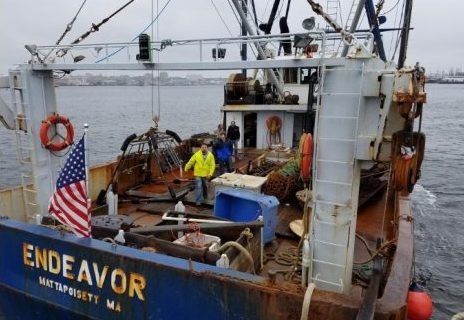
Don Cuddy: Stokesbury’s science continues to yield scallops for SouthCoast
It’s been a long and busy summer for Kevin Stokesbury and his team of scallop researchers at UMass Dartmouth’s School for Marine Science and Technology. But a lot of sea time, following many months of preparation, has paid off in a big way. “We surveyed the entire footprint of the scallop resource from Virginia all the way up to the Hague Line,” Kevin told me. “That’s 70,000 kilometers square, a huge area. We’re all really jazzed.” The data was gathered using the system developed by Kevin in the 90′s, dropping underwater cameras mounted on a steel pyramid to the sea bed from the deck of a commercial scalloper. The work began at the end of April and finished in mid-July. click here to read the story 19:27
Don Cuddy: Blue Harvest a major new presence among city fish houses
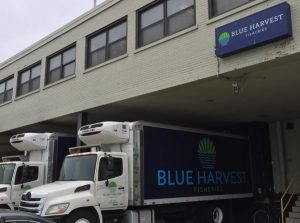 New Bedford is the top-grossing fishing port in the United States and has been since 1999; an enviable record and a tribute to the vision and expertise of all those involved in sustaining an industry that is constantly evolving. While industry momentum has not flagged, the players come and go as markets shift, regulations change and fish stocks rise or fall. Seafood processor Blue Harvest Fisheries is a big presence on the waterfront today yet the company was unknown in the city until relatively recently. So last week I had a chat with CEO and Acushnet native Jeff Davis, a 30-year veteran of the seafood industry, to learn more about Blue Harvest and all that they do. click here to read the story 20:06
New Bedford is the top-grossing fishing port in the United States and has been since 1999; an enviable record and a tribute to the vision and expertise of all those involved in sustaining an industry that is constantly evolving. While industry momentum has not flagged, the players come and go as markets shift, regulations change and fish stocks rise or fall. Seafood processor Blue Harvest Fisheries is a big presence on the waterfront today yet the company was unknown in the city until relatively recently. So last week I had a chat with CEO and Acushnet native Jeff Davis, a 30-year veteran of the seafood industry, to learn more about Blue Harvest and all that they do. click here to read the story 20:06
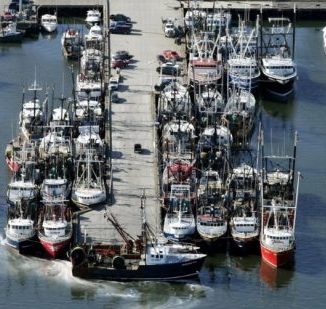
Don Cuddy: Port of New Bedford needs more dredging if it’s going to grow
It remains hugely frustrating that no one at the state level seems to recognize just how important this port is. When the Seastreak ferry recently broke down, it had to tie up at the State Pier for repairs. This in turn displaced the Voyager, a 130-foot fishing vessel, which had to move to Leonard’s Wharf, where boats are already moored five-deep. “We need updated infrastructure. When you have a 130-foot boat tied to a pier designed for 70-80 foot boats your infrastructure isn’t going to last long,” Ed Anthes-Washburn, the affable executive director of the Harbor Development Commission, told me as we toured the working waterfront in a HDC launch last week. “We also need to activate the rest of our waterfront.” click here to read the story 13:01
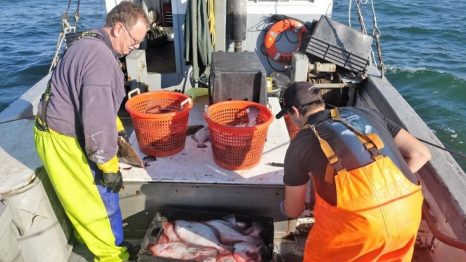
Don Cuddy: An independent fisherman struggles to hang on in an uncertain fishery
It was 4 a.m. as I crossed a deserted Sagamore bridge but the night sky was already beginning to lighten. When I turned into the lot on School St. in Hyannis I could see the boat, its white hull splashed with green from the glow of the starboard running light. I clambered aboard. On the Angenette, a 40-foot wooden dragger built in 1946, Captain Ron Borjeson waited along with his grandson Trent Garzoni. Lost amongst the tourist hordes and tricked-out sportfishing boats crowding the Hyannis docks these are guys you don’t notice anymore — independent commercial fishermen, struggling to pursue their traditional livelihood. Reductions in the catch limits and rising expenses are constant worries. The fluke quota was cut by 30 percent last year and again this year, while just to tie up in Hyannis for the season costs eleven grand. click here to read the story 10:37
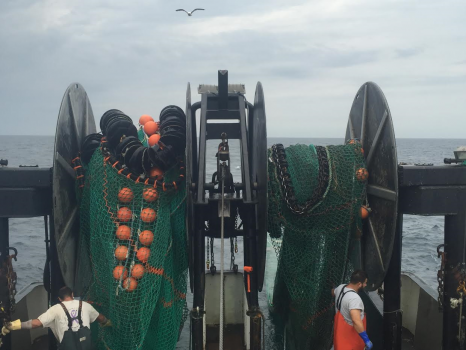
A Clean Sweep On The Ocean Floor
Most of the reporting in the media about commercial fishing and declining stocks in the Northeast dwells on how dire the situation has become with the fault generally attributed to fishermen and “overfishing.” The view on the waterfront is very different however. Fishermen have long maintained that there is a huge disconnect between what they see on the water and the conclusions derived from the NOAA surveys and stock assessments. Their claims have been dismissed as self-serving. Now it seems the fishermen have a strong case. On a recent bottom trawl survey, a typical industry net caught four times as many flatfish as the rig used on the government trawl surveys. Written by Don Cuddy, program director at the Center for Sustainable Fisheries Read the story here 17:17
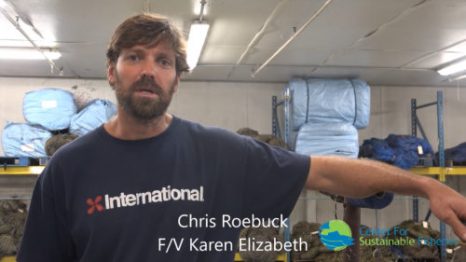
New England: Twin trawl survey validates industry concerns with NOAA assessment
Fishermen in New England do not believe that the survey vessel used by NOAA is catching fish in amounts comparable to what they haul up and have long questioned the fishing gear NOAA employs. To address these doubts a Rhode Island captain, Chris Roebuck went out and towed two nets simultaneously to compare the different gear types. here is what he found. Watch the video here 08:41
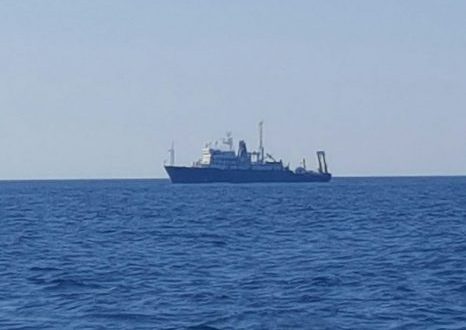
We were here first
So this is what the future looks like in late August from the deck of a fishing vessel south of the Vineyard. This ship is doing a survey looking for good bottom in which to plant offshore wind turbines. Fishermen are looking at this in the same way the Plains Indians probably looked at the Iron Horse. They may not have been up on the marvels of technology but I believe when they heard that whistle blowing they had a gut feeling that there were going to be winners and losers in the new order and they had no illusions about which end of the deal they would probably be getting. This particular area of the ocean is important to squid fishermen and if the turbines go in the fishermen will no longer be able to fish there. These remaining groundfish boats have already been squeezed out of other fisheries given the small quota they are allowed to catch and this represents another threat to their livelihood and way of life.
Promote greater scientific and socio-economic understanding of our nation’s fisheries and our fishing industry
Support the Center for Sustainable Fisheries www.centerforsustainablefisheries.org
NOAA To Enlist Commercial Fishing Boats To Help Gather Data For Stock Surveys
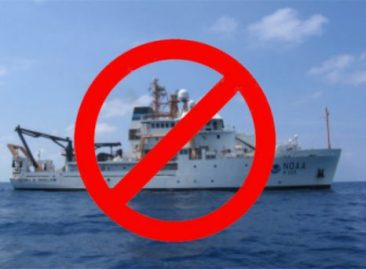 The National Oceanic and Atmospheric Administration has announced it will begin enlisting commercial fishing boats to help gather data for its often-controversial stock surveys – shifting that task at least partially away from its research vessel Henry T. Bigelow(sic). The Bigelow has experienced a number of maintenance issues, which caused a two-month delay in this year’s Spring survey. Fishing advocates are hailing NOAA’s decision, which was spearheaded by the outgoing director of the NOAA Science Center in Woods Hole. They say it represents a realization of the need for greater cooperation among regulators and fishermen. Brian Morris spoke with Don Cuddy of the Center for Sustainable Fisheries about the upcoming change. Listen to the audio report here 08:44
The National Oceanic and Atmospheric Administration has announced it will begin enlisting commercial fishing boats to help gather data for its often-controversial stock surveys – shifting that task at least partially away from its research vessel Henry T. Bigelow(sic). The Bigelow has experienced a number of maintenance issues, which caused a two-month delay in this year’s Spring survey. Fishing advocates are hailing NOAA’s decision, which was spearheaded by the outgoing director of the NOAA Science Center in Woods Hole. They say it represents a realization of the need for greater cooperation among regulators and fishermen. Brian Morris spoke with Don Cuddy of the Center for Sustainable Fisheries about the upcoming change. Listen to the audio report here 08:44
‘Sea change:’ NOAA to shift fish surveys to Commercial Fishing Vessels
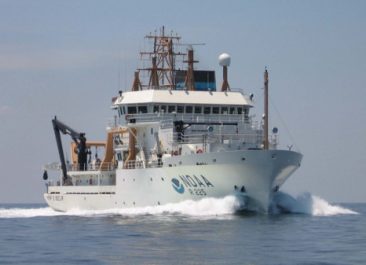 In what one advocate called “a potential sea change” for the commercial fishing industry, NOAA Fisheries announced intentions Tuesday to shift all or part of long-controversial stock surveys from its Bigelow research vessel to commercial boats, saying a transition over the next five years could bring “greater shared confidence” in survey results. “We have to learn to work better with the (commercial fishing) industry — we have to open up better lines of communication,” Dr. Bill Karp, director of NOAA’s Northeast Fisheries Science Center in Woods Hole, said of the transition. Don Cuddy, program director for the Center for Sustainable Fisheries in New Bedford, said fishermen also have felt the Bigelow is unable to accurately count “flatfish,” such as yellowtail flounder, because of the type of gear it tows. “This is going to affect everything across the board — the fishermen have been saying for years that the catch limits and stock assessments do not reflect what they’re seeing on the water,” said Cuddy, who used the “sea change” phrase. Read the story here 15:57
In what one advocate called “a potential sea change” for the commercial fishing industry, NOAA Fisheries announced intentions Tuesday to shift all or part of long-controversial stock surveys from its Bigelow research vessel to commercial boats, saying a transition over the next five years could bring “greater shared confidence” in survey results. “We have to learn to work better with the (commercial fishing) industry — we have to open up better lines of communication,” Dr. Bill Karp, director of NOAA’s Northeast Fisheries Science Center in Woods Hole, said of the transition. Don Cuddy, program director for the Center for Sustainable Fisheries in New Bedford, said fishermen also have felt the Bigelow is unable to accurately count “flatfish,” such as yellowtail flounder, because of the type of gear it tows. “This is going to affect everything across the board — the fishermen have been saying for years that the catch limits and stock assessments do not reflect what they’re seeing on the water,” said Cuddy, who used the “sea change” phrase. Read the story here 15:57
Monitoring The Catch Aboard Groundfishing Vessels
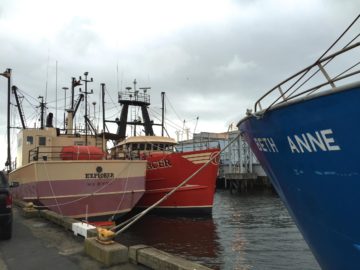 Regulations are stiff in the commercial fishing industry – and especially so for those who go after groundfish like cod and haddock. Now, one of the industry’s biggest players is accused of skirting those regulations for years – allegedly cooking the books and reaping big profits on illegally caught groundfish. As Brian Morris reports, that’s having a ripple effect on small, single-boat groundfishermen who play by the rules. Around the docks of New Bedford, people know Carlos Rafael as the “Codfather,” a legendary, self-made figure who dominates the city’s biggest industry. He manages a fleet of some 40 vessels, and also operates a fish distribution operation. Authorities raided his business in February, and federal officials allege he was changing documents – falsifying the types of fish he reported catching. Audio, Read the rest here 14:26
Regulations are stiff in the commercial fishing industry – and especially so for those who go after groundfish like cod and haddock. Now, one of the industry’s biggest players is accused of skirting those regulations for years – allegedly cooking the books and reaping big profits on illegally caught groundfish. As Brian Morris reports, that’s having a ripple effect on small, single-boat groundfishermen who play by the rules. Around the docks of New Bedford, people know Carlos Rafael as the “Codfather,” a legendary, self-made figure who dominates the city’s biggest industry. He manages a fleet of some 40 vessels, and also operates a fish distribution operation. Authorities raided his business in February, and federal officials allege he was changing documents – falsifying the types of fish he reported catching. Audio, Read the rest here 14:26
Independent scientists need not apply – NMFS denies SMAST Industry paid RSA Funding
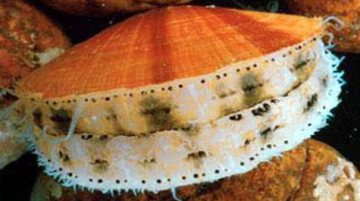 For almost 20 years now, SMAST has worked diligently alongside our fishermen to improve fishery science. Kevin’s research has earned him their respect, earned them a ton of money and earned New Bedford its position as the nation’s top fishing port. The drop camera survey he pioneered to count sea scallops on Georges Bank in 1999 was a game changer that helped to rescue an ailing industry. Anyone on the waterfront can attest to that. He did it by providing independent evidence that what fishermen had been saying was correct. There were plenty of scallops out there waiting to be harvested in spite of what the government survey would have everyone believe. Barney Frank took those survey pictures to Bill Daley, who was Secretary of Commerce at the time. Daley listened and New Bedford’s ship came in. It may now be departing. Read the op-ed here 07:27
For almost 20 years now, SMAST has worked diligently alongside our fishermen to improve fishery science. Kevin’s research has earned him their respect, earned them a ton of money and earned New Bedford its position as the nation’s top fishing port. The drop camera survey he pioneered to count sea scallops on Georges Bank in 1999 was a game changer that helped to rescue an ailing industry. Anyone on the waterfront can attest to that. He did it by providing independent evidence that what fishermen had been saying was correct. There were plenty of scallops out there waiting to be harvested in spite of what the government survey would have everyone believe. Barney Frank took those survey pictures to Bill Daley, who was Secretary of Commerce at the time. Daley listened and New Bedford’s ship came in. It may now be departing. Read the op-ed here 07:27
Don Cuddy – Fishermen fight back against government overreach
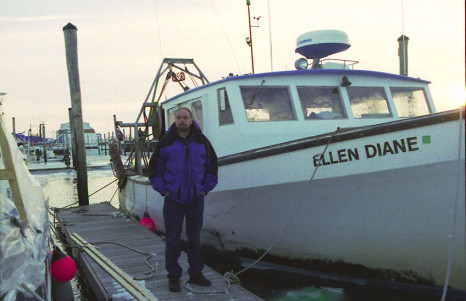 I attended the hearing with John Haran of Dartmouth, manager of Northeast Fisheries Sector XIII which includes 32 fishermen. Sector XIII is a plaintiff in the case along with New Hampshire commercial fisherman Dave Goethel. The all-day hearing concluded without a ruling. Federal District Judge Joseph Laplante will issue a decision in his own time after deliberating on a legal case with potential ramifications not only for the fishing industry but with respect to any government agency’s attempt to increase its own power. Steve Schwartz, an attorney with Cause of Action, a nonprofit based in Washington, D.C., that focuses on government overreach, represents the fishermen. He told the court that the scope of an agency’s power is determined exclusively by Congress and that NOAA lacks the statutory authority to require fishermen to pay for monitors. Read the op-ed here by Don Cuddy 07:33
I attended the hearing with John Haran of Dartmouth, manager of Northeast Fisheries Sector XIII which includes 32 fishermen. Sector XIII is a plaintiff in the case along with New Hampshire commercial fisherman Dave Goethel. The all-day hearing concluded without a ruling. Federal District Judge Joseph Laplante will issue a decision in his own time after deliberating on a legal case with potential ramifications not only for the fishing industry but with respect to any government agency’s attempt to increase its own power. Steve Schwartz, an attorney with Cause of Action, a nonprofit based in Washington, D.C., that focuses on government overreach, represents the fishermen. He told the court that the scope of an agency’s power is determined exclusively by Congress and that NOAA lacks the statutory authority to require fishermen to pay for monitors. Read the op-ed here by Don Cuddy 07:33
Video: The Phil Paleologos Show – A Talk About At Sea Monitors and Other Regulations For Fishermen
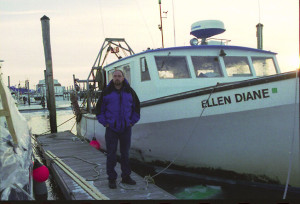 Phil Paleologos hosts a conversation regarding a lawsuit over a provision that would require fishermen to pay for at-sea monitors. This conversation included David Geothel, a fisherman and plaintiff in the lawsuit; Richard Canastra, of the Buyers and Sellers Exchange or BASE; Don Cuddy, Program Director for the Center for Sustainable Fisheries; and , the Manager of Sector 13. A court hearing will take place January 21. Watch the video here 11:20
Phil Paleologos hosts a conversation regarding a lawsuit over a provision that would require fishermen to pay for at-sea monitors. This conversation included David Geothel, a fisherman and plaintiff in the lawsuit; Richard Canastra, of the Buyers and Sellers Exchange or BASE; Don Cuddy, Program Director for the Center for Sustainable Fisheries; and , the Manager of Sector 13. A court hearing will take place January 21. Watch the video here 11:20


































